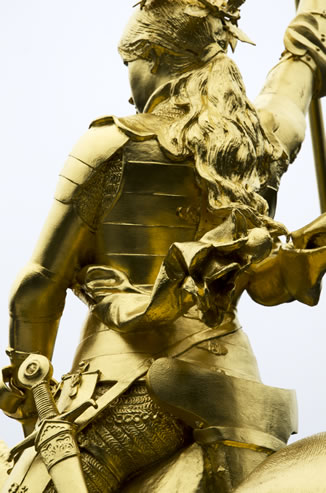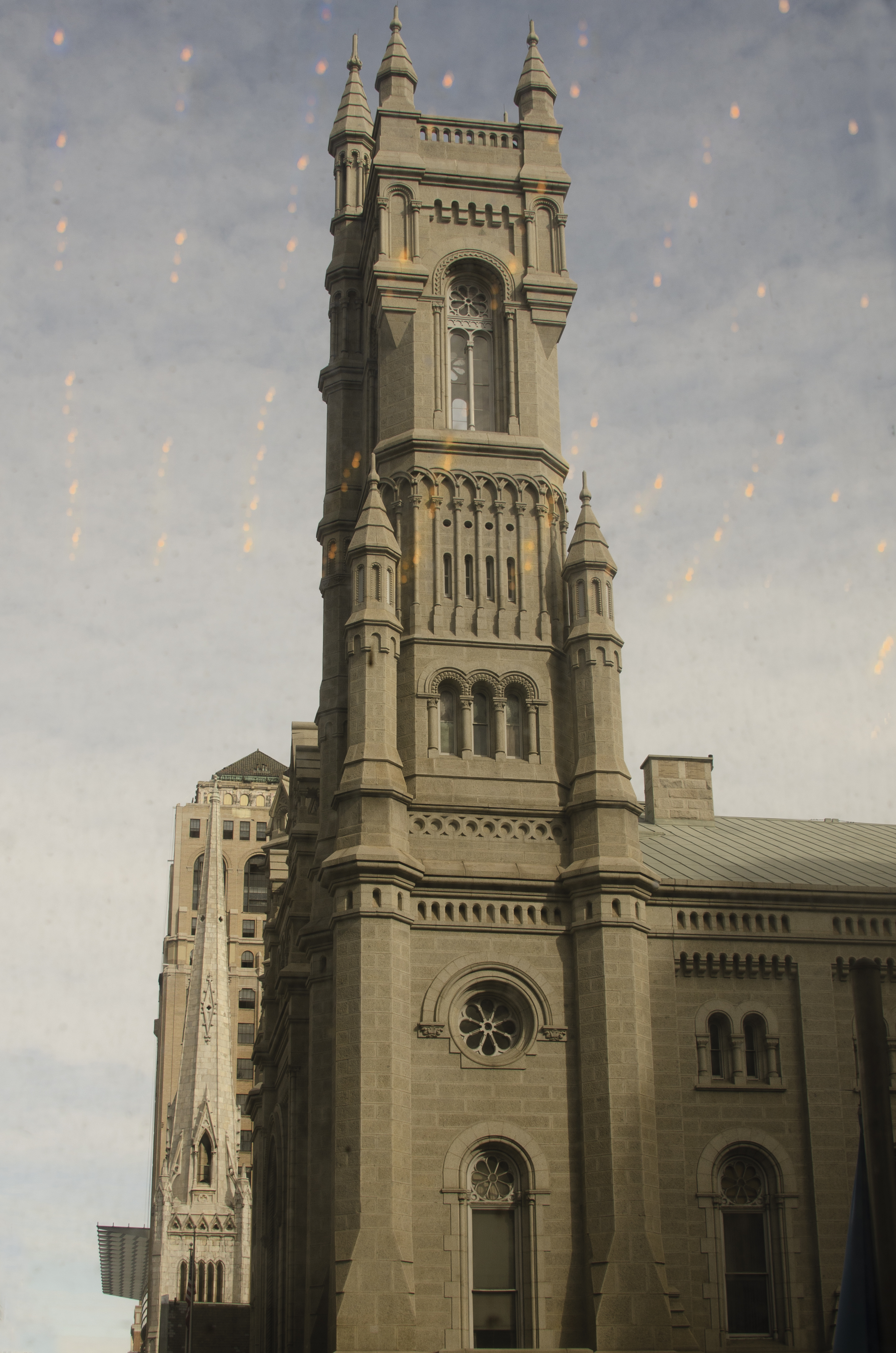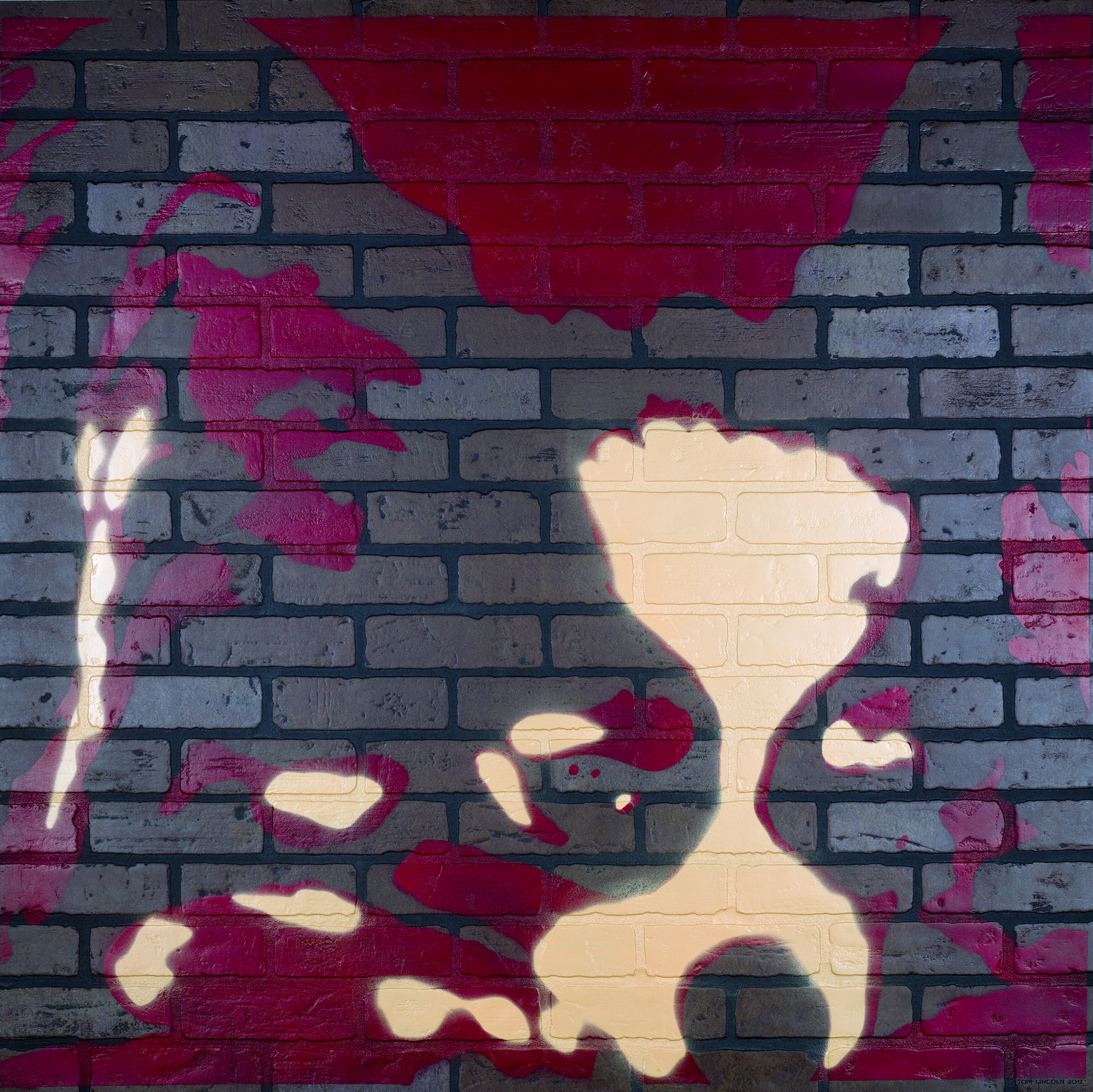Monument

For the art project Monument, Tracy Steen collaborated with Tom Lincoln to explore the meaning of monuments. Who among us is worthy of a monument? How can we best memorialize great actions and great people? Should monuments have an expiration date?
Dr. Steen and Mr. Lincoln photographed outdoor monuments in Philadelphia, Baltimore, Washington D.C., New York, and Boston. Because communities shift over time, some monuments now suffer from overcrowding or, worse, isolation. To keep the focus on the subjects of the monuments, Dr. Steen and Mr. Lincoln found angles that isolated the statues from the surroundings. Shooting only on overcast days, they photographed all of the monuments against the natural, neutral backdrop of a whitish grey sky.
Many of the monuments were created over the course of decades during the golden age of fine art sculpture from 1870 to 1914. Artists from Europe and the United States competed for both public and private commissions to create sculptures in stone and bronze. Monuments were built to last and were unveiled in places of prominence, forming permanent tributes to people and times worth remembering.
The first of these photographs were exhibited from July to September 2012 at Giant Steps Gallery in the Rittenhouse Square neighborhood of Philadelphia.
Click on the images on this page to view selected high-resolution photographs from the project.

Joan of Arc
Napoleon III commissioned this statue of Joan of Arc to help re-establish French confidence following defeats by the Prussian army in 1870. During the medieval clash for control of France known as the Hundred Years’ War, Joan of Arc was a hero to the forces of Charles VII of Valois. Inspired by saints, she rose from humble circumstances to lead an army against the other claimant to the French throne, Henry VI of England. Joan of Arc was martyred in 1431, but her victory at Orléans in 1429 had already turned the tide of the war in favor of the Valois dynasty.
This monument is an example of how public art can be successfully relocated and renovated. Emmanuel Fremmier created Joan of Arc in 1874, and in 1890 the Fairmount Park Art Association bought the statue ungilded. Joan of Arc was first placed at the east end of the Girard Avenue Bridge, but this location was not a success. In 1959, the statue was gilded and moved to its current location, across from the Philadelphia Museum of Art on Kelly Drive. Joan of Arc has been an inspiration in this location. The statue was removed to repair a crack in 2009, re-gilded, and returned in 2010.

Sitting Lion
Antoine-Louis Barye—known also for creating the lion statue in Rittenhouse Square in Philadelphia—designed Sitting Lion in 1846. It was commissioned by Louis-Philippe d’Orléans, “King of the French.” The original Sitting Lion is in Paris. Famed art collector William T. Walters donated this copy to the City of Baltimore in 1885.
The monument is a tribute to Louis-Philippe’s liberal revolution that overthrew the Bourbon monarchy. His reformist, constitutional July Monarchy came to power during a three-day revolution from July 27 to July 20, 1830. The lion references Leo, the sign of the zodiac that governs late July. The July Monarchy was itself overthrown in 1848 when a revolution ushered in the more liberal but short-lived Second Republic.
Sitting Lion is an example of a monument that has thrived over time. Located in a park outside the Walters family home in the Mount Vernon neighborhood of Baltimore, the monument has not been moved since it was unveiled in 1885. The nearby Walters Art Museum is filled with treasures, and the park around the statue is well landscaped and well traveled. By treating the statue with care, Baltimore honors itself, the Walters family, and the ideals of the artist.
The photograph was taken in April 2012 during a rainstorm. The lion’s dignified mien, impervious to the streams of water running down his face, seems an appropriate symbol of the monument’s resilience.
Philadelphia City Hall
Dr. Steen’s photographs exploring little-noticed aspects of Philadelphia City Hall (and its surroundings) are currently being used to accompany the chapters of the satirical serial novel, The Trials of a Common Pleas Judge, by the Hon. Mark I. Bernstein (Ret.). In the book, Judge Bernstein travels in time to the Philadelphia political machine of 1913.
David Grunfeld says in the magazine The Philadelphia Lawyer, “Is this fiction, or based on facts and research? Whatever you conclude, you are likely to be fascinated by the straightforward narrative, and looking forward to the next chapter.”
City Hall was constructed in the center of Philadelphia from 1871 to 1901. Designed in the Second Empire style, it was at its completion the tallest habitable building in the world. City Hall remains the world’s largest municipal building, with almost 700 rooms. It houses all three branches of government, including the Court of Common Pleas.
Below are selected photos from the series.






Exercises in Three Dimensions
In these exercises, Dr. Steen and Mr. Lincoln examined how red and cyan stereoptic filtering can be used to place two-dimensional objects in the foreground, midground, or background of a painting.
To view the paintings with the added depth of stereopsis, wear 3D glasses with red and cyan tinted lenses.
For the exhibit, Dr. Steen and Mr. Lincoln explained in this paper the neurological reasons why red and cyan 3D glasses work.
These paintings were exhibited from July to November 2011 at Giant Steps Gallery in the Rittenhouse Square neighborhood of Philadelphia.
Orion

Orion. Spray paint on artificial brick. 48 x 48 in. 2011. This painting depicts Orion, one of the most recognizable constellations. When looking at the night sky, we do not have a sense of three dimensions because the stars are too distant to provide meaningful information about depth. In reality, stars are light years apart, but this distance is not obvious to the naked eye. When gazing at a seemingly flat night sky, we naturally group clusters of bright stars together. Even without prior knowledge of the names and mythological stories associated with constellations, most stargazers look for recognizable patterns in the stars.
The 3D effect allows us to experience the stars with the addition of stereoptic depth. That which we normally see in two dimensions we can now experience in three. Without the 3D glasses, we see separate red and cyan stars with overlapping borders. With the 3D glasses, each eye receives an image of white stars against a black background. Through the red-filtered eye, the red stars turn white and the cyan stars turn black (and consequently blend into the black background). Through the cyan-filtered eye, the cyan stars turn white and the red stars turn black (and consequently blend into the black background). In this way, the brain is presented with two, slightly separate images of the stars. Through the process of stereopsis, the images are compared and the differences are mistakenly attributed to depth, not 3D glasses. Sometimes mistakes have beautiful results: With 3D glasses on, the constellation Orion appears to float in the foreground.
Eye Chart

Eye Chart. Spray paint on artificial brick. 48 x 36 in. 2011. This painting plays with the appearance of letters on a typical eye chart. Because of perspective, a technique used by artists to convey depth, the larger letters appear to be closer to the viewer than the smaller letters when viewed without 3D glasses. With the 3D glasses, letters shift to the foreground or background without regard to their size. In addition, by painting red and cyan on a light background, the image that each filtered eye sees is a dark image (the opposite of the effect achieved in Orion).
Telephone Wires

Telephone Wires. Spray paint on artificial brick. 48 x 72 in. 2011. This painting depicts a bird about to land on a telephone wire. In the background the sun peeks through a dark cloud. The exercise blends red-cyan stereoptic filtration with traditional techniques used by artists to convey depth. The sense that there is atmospheric haze between the viewer and the cloud gives the impression that the cloud is far away. Gradation in the dark parts of the cloud defines the cloud’s shape. The painting employs another traditional depth cue—occlusion—to give the impression that the telephone pole, the wires, and the bird are closer than the cloud because the cloud appears to be partially obscured by those objects. A slight angle to the wires conveys depth through perspective. The wires appear to be receding into a vanishing point.
Without 3D glasses, however, the painting is still missing two of the depth cues by which our brains typically and automatically calculate depth: stereopsis and relative motion. With the 3D glasses, a stereoptic illusion is created that adds depth and clarity to the painting. The two sets of telephone wires are more easily distinguished, and it becomes more obvious that the bird is preparing to land on wires in the foreground.
Star
Star. Spray paint on Plexiglas. 48 x 48 in. 2011. This painting is a two-sided abstraction. One side, when viewed through 3D glasses, depicts a star exploding as it becomes a supernova. The reverse side, when viewed through 3D glasses, depicts a star collapsing into a black hole.
This exercise demonstrates how an artist can use red and cyan outlining to manipulate the position of objects relative to the viewer. When the placement of the red and cyan outlines are reversed, objects that were previously in the foreground are now in the background. Similarly, objects that were in the background appear to be in the foreground. The transparent surface of the painting allows the viewer to flip the painting from front to back, watching the exploding star transform into a collapsing black hole.
Work, Play, Rest



“Work,” “Play,” and “Rest” were shown in April 2011 by Studio Christensen in the Rittenhouse Square neighborhood of Philadelphia. In this series, Dr. Steen and Mr. Lincoln examined the joy of living life intensely and in the present moment, as exemplified by their dog, Serena (1999-2014). Below is a description of the exhibit:
Work, Play, Rest
2011
Spray paint on artificial brick, 4 feet by 4 feet
This triptych portrays three states of being that are common to both humans and dogs: work, play, and rest. With equal intensity, a dog reacts to an intruder, instigates entertainment, and commits to stillness. No time is wasted in a dog’s life.
The dog in this series is a Papillon (French for butterfly). A Papillon’s oversized ears move like wings as they collect information and communicate emotion. Like all dogs, this Papillon models a life of full engagement, a good life.
Where is the good life in contemporary art? We crave art that makes an intimate connection. These paintings are a celebration of our dog, your dog, and this wonderful neighborhood where we live.
Biography
Tracy Steen is an artist and psychologist in Philadelphia. She received a Ph.D. in clinical psychology from the University of Michigan in 2003 and moved to Philadelphia to complete a postdoctoral fellowship in positive psychology at the University of Pennsylvania. She continued to work at the University of Pennsylvania as the Clinical Director and then Director of the Charles O'Brien Center for Addiction Treatment. A chapter about courage that she wrote for Character Strengths and Virtues influenced the early stages of the Monument project, but her main source of inspiration is her family’s tradition of military service.

